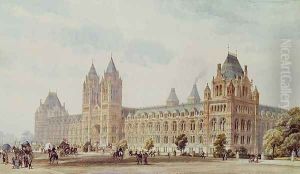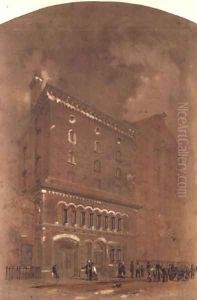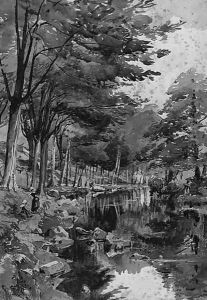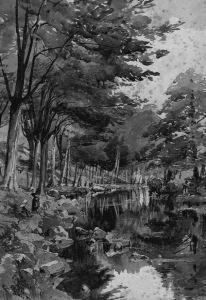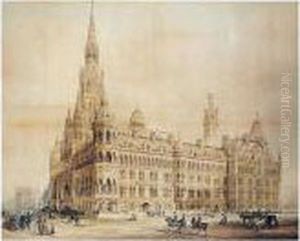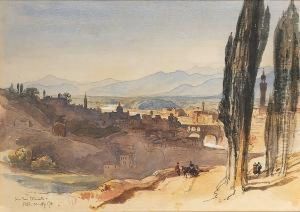Alfred Waterhouse Paintings
Alfred Waterhouse was a renowned British architect, born on July 19, 1830, in Liverpool, England, to a wealthy Quaker family. He demonstrated an early interest in drawing and design, which led to his education at various institutions including the Royal Academy Schools. Waterhouse established his own practice in Manchester after training with the architect Richard Lane. His career was notable for its emphasis on the Gothic Revival style, which was popular in Victorian Britain.
Waterhouse quickly became known for his distinctive approach to design, and his work came to define the architectural landscape of the period. Among his most famous works is the Natural History Museum in London, completed in 1881, which remains an iconic building due to its ornate terracotta façade and intricate detailing. Another significant project was the Manchester Town Hall, finished in 1877, which is considered one of the finest examples of neo-Gothic architecture in the United Kingdom.
Throughout his career, Waterhouse received numerous commissions for both public and private buildings, including universities, hospitals, and museums, as well as country houses and city offices. His designs often incorporated modern construction techniques and materials, which he combined with historical styles to create functional yet aesthetically pleasing structures. Waterhouse became a member of the Royal Academy in 1888 and served as its president from 1895 to 1898.
Alfred Waterhouse's contribution to architecture was not limited to individual buildings; he also had a significant impact on the urban landscapes of many cities across the UK. His adherence to the Gothic Revival style was part of a broader movement that sought to express moral and spiritual values through architecture, a reflection of the Victorian era's complex relationship with religion and progress.
Waterhouse continued to work until his death on August 22, 1905. His legacy is preserved in the numerous buildings that he designed, many of which are now listed heritage sites. His son, Paul Waterhouse, also became an architect, continuing the family tradition. Alfred Waterhouse remains a celebrated figure in the history of British architecture, remembered for his versatility, the quality of his work, and his influence on the architectural language of his time.
